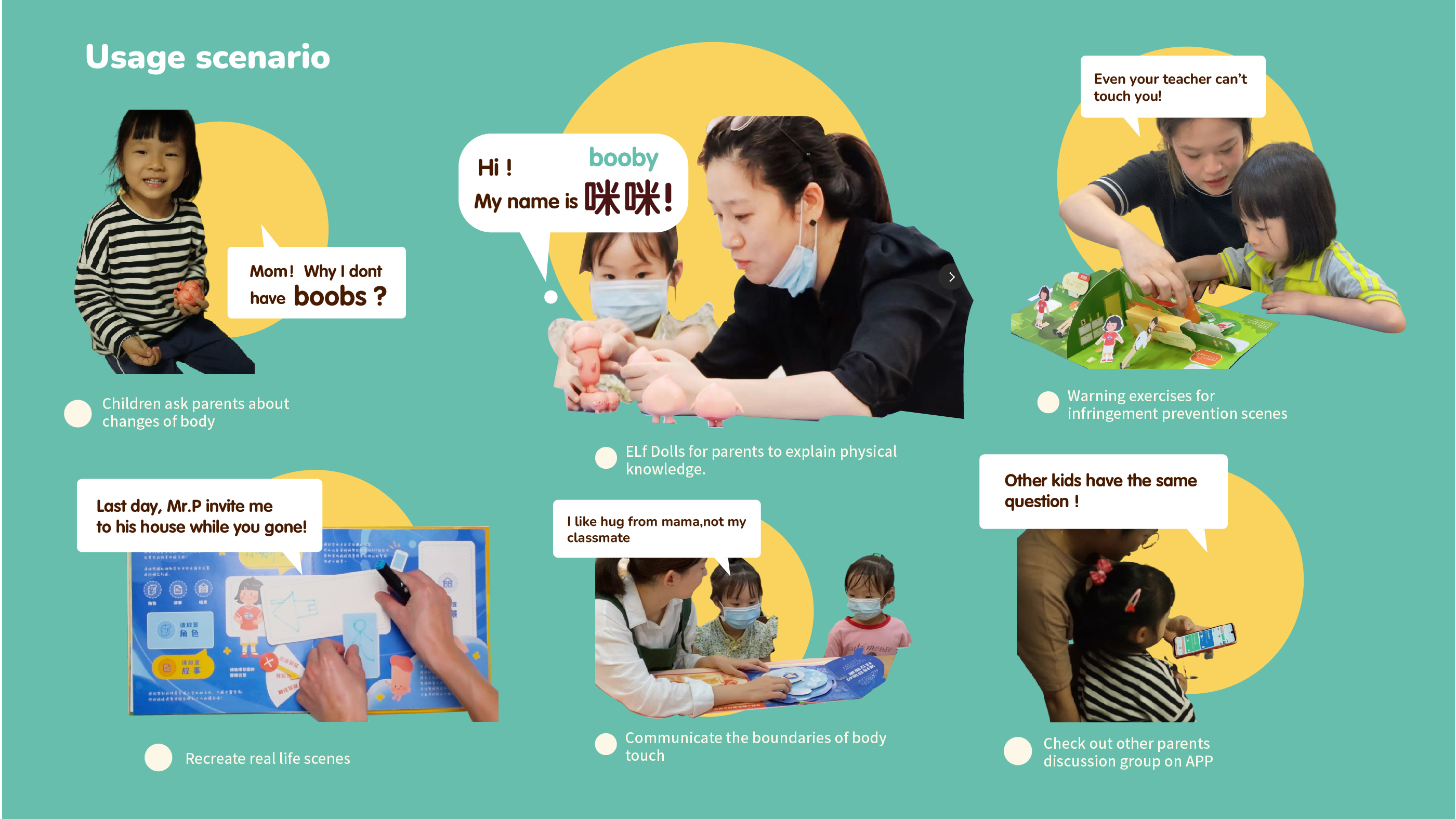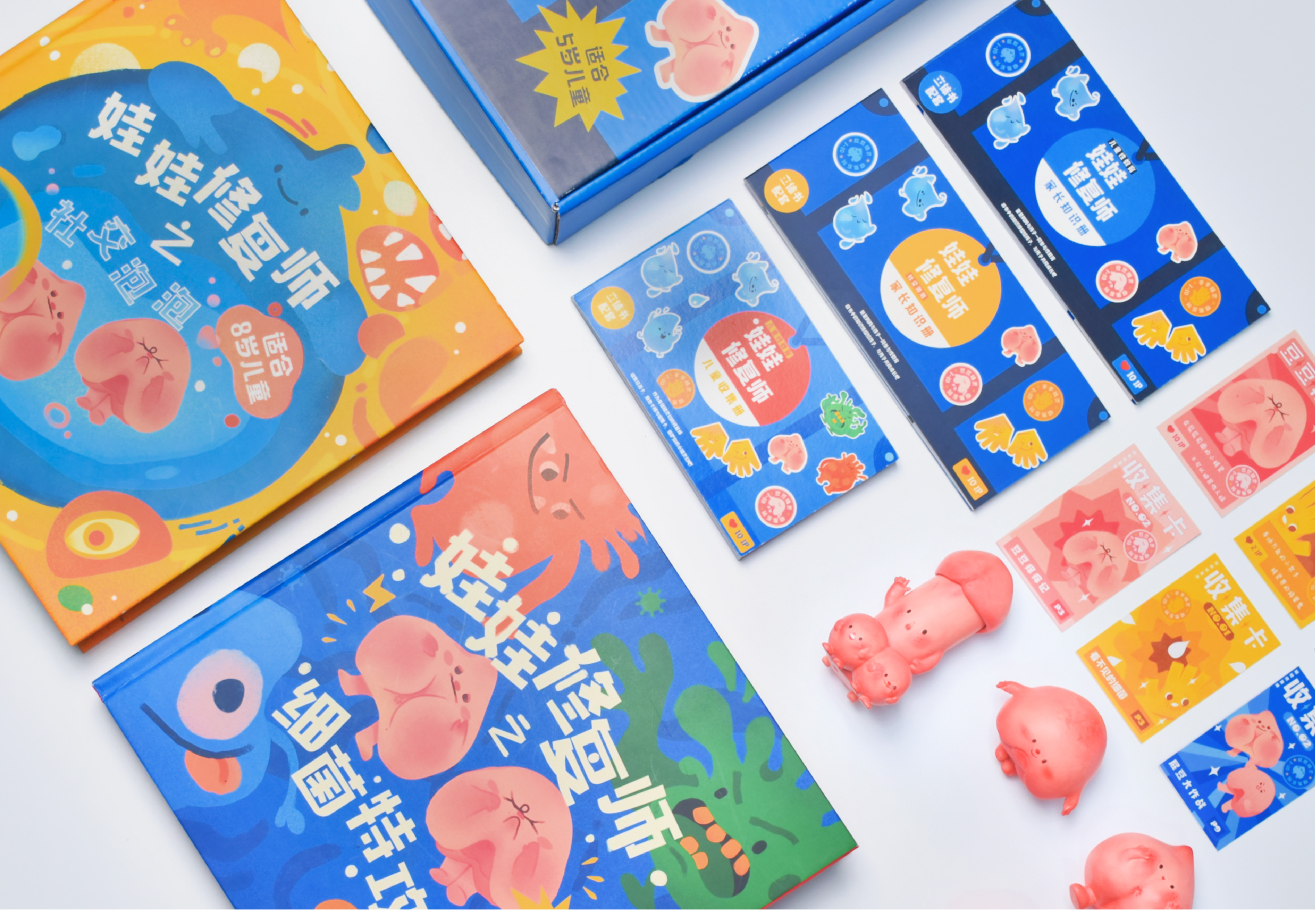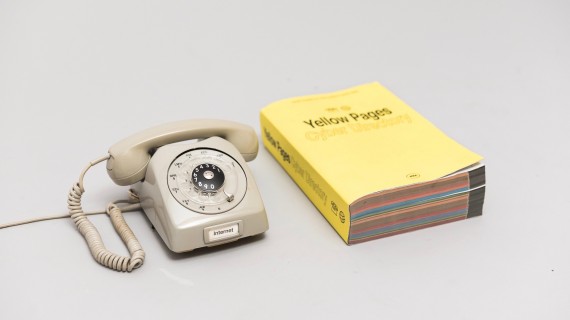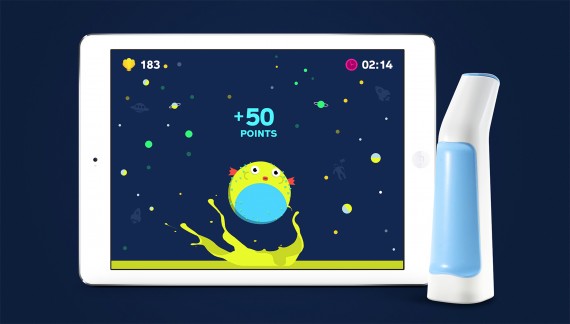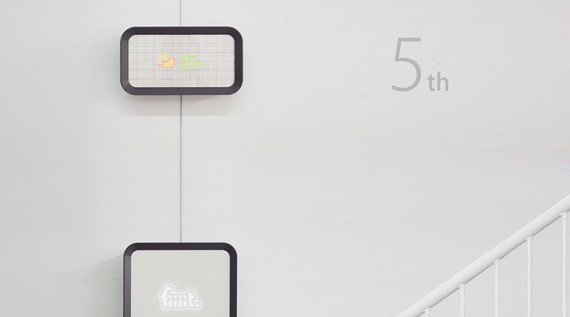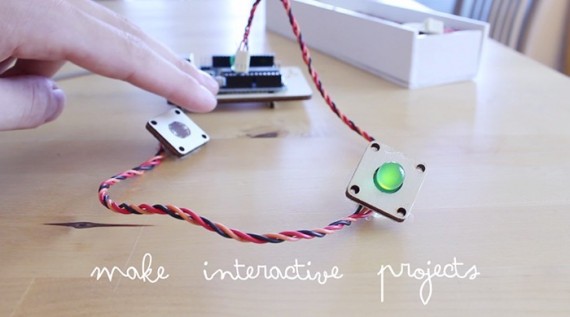DOLL-SITTER
Team
Company | Institution
Category
Type
Project description
DOLL-SITTER is a toy set of pop-up smart books and application for sex education for children aged 5-8, using dolls which play the role of body organs and children played as their protectors. Through the interaction of dolls and smart pop-up books, children can learn about sex education, establish life scenes, and discuss with their parents the sex education issues in the “difficult to speak” life. Parents use APP and cards for parent-child interaction, complete the task of protecting the doll together, talk about sensitive topics, and answer children’s doubts about the body through the elf. It aims to cultivate long-term Comprehensive Sexuality Education, stimulate children’s curiosity about sexual knowledge, and weaken the embarrassment of traditional parents in front of sexual knowledge.
What opportunity was the project addressing?
In 2015, the World Health Organization reported that 9.5% of Chinese girls and 8% of Chinese boys had experienced some form of sexual assault, meaning that approximately one in 10 minors had been sexually assaulted. Shame about sex is deeply ingrained in East Asian culture, and Chinese families still habitually avoid talking about it. In an educational climate of disrespect and inequality, parental denial and judgment can lead to shame, which can lead to a refusal to talk about experiences such as sexual assault and school bullying, and even lifelong consequences in the construction of values as children grow up.
In family sex education, parents need to both “educate” and “listen” in order to meet the complete sex education goal. In the past, traditional approaches to sex education have made children passive recipients of sex education. Therefore, there is an urgent need in China for products that can inspire dialogue and help parents implement sex education, and establish equal relationships in family sex education.
Who were you designing for?
We are designed to provide comprehensive sex education for children aged 5-8 years old, from rural to urban areas, and for Chinese families at all levels of sex education knowledge.
What was the impact?
Doll Sitter has grown to be suitable for families, kindergartens, and other public welfare classroom environments after several public welfare workshops and iterations of data collection. It is expected to be used in more than 30 kindergartens and primary and secondary schools in Hunan Province, serving more than 2,000 children and youth, and will be expanded nationwide with the cooperation of public welfare organizations.
Describe the design process applied to the project.
To better capture data on the language and behavior of parents and children during the use of the prototype, we conducted participatory design exercises with 12 groups of Chinese families using the prototype as a medium. The team used the prototypes in a workshop format to gain problem insights. Through the workshop format, need points and design directions were identified and three prototypes of kits based on different sex education theories were developed. Finally, we tested the prototype of the Doll Sitter to explore the discursive power relationship between children and parents in family sex education and to realize the role transformation between them. Participatory design methods were used to observe and compare the different conversational states displayed by children and parents when using each prototype, as well as the prototype’s instrumental properties and level of involvement in the sex education process.
During the use of the smart three-dimensional book kit developed based on the empathy method, children acted as participants in the story and engaged in discussions with their parents based on the book’s story. The Doll Sitter was able to empower children by design and help shift roles so that family members could build an equal dialogue on the topic of sex education, allowing children to become a collection of narrators and receivers.
What opportunity was the project addressing?
In 2015, the World Health Organization reported that 9.5% of Chinese girls and 8% of Chinese boys had experienced some form of sexual assault, meaning that approximately one in 10 minors had been sexually assaulted. Shame about sex is deeply ingrained in East Asian culture, and Chinese families still habitually avoid talking about it. In an educational climate of disrespect and inequality, parental denial and judgment can lead to shame, which can lead to a refusal to talk about experiences such as sexual assault and school bullying, and even lifelong consequences in the construction of values as children grow up.
In family sex education, parents need to both “educate” and “listen” in order to meet the complete sex education goal. In the past, traditional approaches to sex education have made children passive recipients of sex education. Therefore, there is an urgent need in China for products that can inspire dialogue and help parents implement sex education, and establish equal relationships in family sex education.
Who were you designing for?
We are designed to provide comprehensive sex education for children aged 5-8 years old, from rural to urban areas, and for Chinese families at all levels of sex education knowledge.
What was the impact?
Doll Sitter has grown to be suitable for families, kindergartens, and other public welfare classroom environments after several public welfare workshops and iterations of data collection. It is expected to be used in more than 30 kindergartens and primary and secondary schools in Hunan Province, serving more than 2,000 children and youth, and will be expanded nationwide with the cooperation of public welfare organizations.
Describe the design process applied to the project.
To better capture data on the language and behavior of parents and children during the use of the prototype, we conducted participatory design exercises with 12 groups of Chinese families using the prototype as a medium. The team used the prototypes in a workshop format to gain problem insights. Through the workshop format, need points and design directions were identified and three prototypes of kits based on different sex education theories were developed. Finally, we tested the prototype of the Doll Sitter to explore the discursive power relationship between children and parents in family sex education and to realize the role transformation between them. Participatory design methods were used to observe and compare the different conversational states displayed by children and parents when using each prototype, as well as the prototype’s instrumental properties and level of involvement in the sex education process.
During the use of the smart three-dimensional book kit developed based on the empathy method, children acted as participants in the story and engaged in discussions with their parents based on the book’s story. The Doll Sitter was able to empower children by design and help shift roles so that family members could build an equal dialogue on the topic of sex education, allowing children to become a collection of narrators and receivers.


